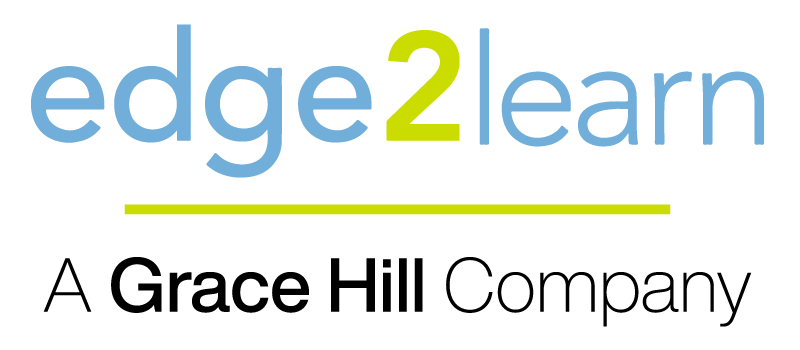Cross-training is an exercise routine that uses several styles of physical training to develop a specific component of fitness. While varying workouts, a person can target different muscle groups, which helps them reach a higher level of fitness. While most leasing office teams do not participate in whole-body fitness workouts at work, by the time 6 PM comes around, it can sometimes feel like they did. In an industry notorious for operating with sparse office teams, cross-training job functions as part of multifamily education can improve on-site employees’ proficiency levels in roles outside their current responsibilities, increase team strength and agility, and ensure collective success.
Build Team Strength
The goal of cross-training in the leasing office is to help single-job-focused employees develop new skills for other types of tasks which are beyond the parameters of their role, consequently allowing them to become more valuable employees and increase overall team strength. A community manager’s responsibility is to ensure every employee performs their best at their job. The leasing professional leases the apartments. The service team prepares the apartments. The assistant manager collects the rent, and so on. Employees are often heroes on their own island. They are simply concerned about their own job and not how each position in the company fits together to create the total experience for the customer. A cross-training plan for multifamily education can change this.
While there are many starting point options, it can be as simple as asking employees to document a list of functions and daily tasks for their particular position. These functions and tasks can then be broken down into an achievable daily schedule. Then it’s time to create a plan. Which employees could benefit the most from learning from each other? When should employees meet to train and for how long? What specific tasks do you want each employee to teach/learn? As employees begin to perform tasks in new areas and take a hard look at the way they do things, problems and suggestions for improvement are often identified. These discoveries open dialogue and create opportunities for employees to build new relationships and strengthen bonds with people in other departments they might not otherwise have daily contact with. According to a Workplace Dynamics study, strong bonds at work are fundamental for creating a workplace that is organizationally healthy, long-lasting and efficient. Connected teams are stronger teams.
Improve Agility
In his famous 1982 book, Out of Crisis, Dr. W. Edwards Deming offered 14 points for leaders to follow to significantly improve the effectiveness of a business or organization. It was his belief that only through deep immersion in the many areas of the business could an individual hope to competently manage the business. “Institute training on-the-job” is point 6 in Dr. W. Edwards Deming’s 14 Points for Total Quality Management. If you break this point down a little further, you will find these additional supporting ideas can be attained through an effective cross-training multifamily education program.
- Train for consistency to help reduce variation
- Build a foundation of common knowledge
- Allow employees to understand their roles in the “big picture.”
- Encourage transfer of knowledge
Cross-training through practical on-the-job training is one of the best ways to improve your team’s agility. Consider presenting a monthly individual case-study based on an actual business problem to all employees regardless of their position. These mental exercises will put some employees outside of their comfort zone – that is the goal. They will also stretch others and reveal qualities you have never seen before in some of your employees. Leasing professionals should have opportunities to evaluate maintenance process issues while service employees can tackle resident or customer process issues. Every individual should be given the opportunity to present his or her results to the manager in a quick face-to-face meeting. Be prepared to be blown away by the results of this exercise!
Another way to improve agility is to assign a new task to an employee and schedule a practice session. This allows the community manager to evaluate the progress and examine performance as the employee moves through the task. If successful, the manager has the ability to expand that employee’s role or even offer an incentive. Improving team agility and flexibility can be a win-win for everyone in the case of employee turnover, illness, or vacation absence. Learning by doing helps employees internalize new information and appreciate the importance of their skills to the team’s overall needs and success. Do your leasing professionals know how to change an air filter? When presented with a simple office task, is your service team capable of jumping in to help a resident? Agile teams are better equipped to quickly deliver seamless service to their customers in times of disruption, which can protect the customer’s experience.
Ensure Collective Success
When certain employees “own” certain tasks, your community is not positioned for sustainability. It is also a fact that when employees become too comfortable in their areas of expertise, they are more likely to reach a point where the job presents no new challenges. A recent study by Udemy uncovered that 46% of employees cite limited opportunities to learn new skills as the top reason why they are bored in their current roles and looking for a change. Your community will be able to move at a much faster pace when everyone is aligned in the same direction and follows the same goals. On the flips side, research shows that when employees are willing to go beyond their formal roles by helping out coworkers, introducing new ideas and work practices, attending non-mandatory meetings, working late to finalize important projects, and so forth, their companies are more efficient and effective.
Collective success can be felt when…
- The skills gap is eliminated and the skill set is expanded through multifamily education.
- You reveal what your employees are capable of beyond their job descriptions.
- Managers are able to leverage their internal talent when opportunities for promotion present themselves.
- Familiarity with key tasks allows all team members to easily cover an absence or vacancy.
Once your employees feel comfortable with their new skill sets, create a contingency plan. Who will be taking on a specific task when a particular person is out of the office? Create a strategy for every scenario and every combination of absence. Communicate your plan with the team.
Cross-training can be the answer to introducing new challenges and revealing fresh perspective to old problems. Your employees will become teachers, and they will be forced to answer questions, explain their processes, and see the duties they perform daily through a renewed set of eyes. This progression will result in a stronger and more collective team spirit. Sometimes, the best motivators are non-monetary rewards. Do you have a cross-training plan in place at your community?
Read more like this from Edge2Learn
Maria Lawson
Vice President of Training and Development
Edge2Learn / Ellis Partners in Management Solutions



